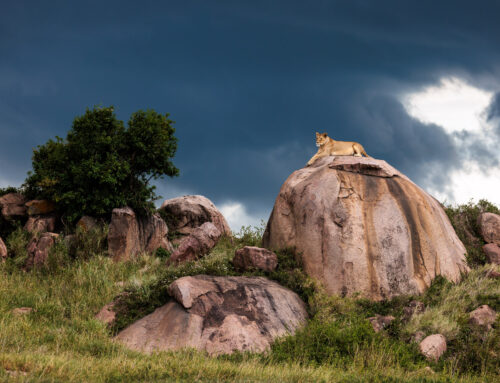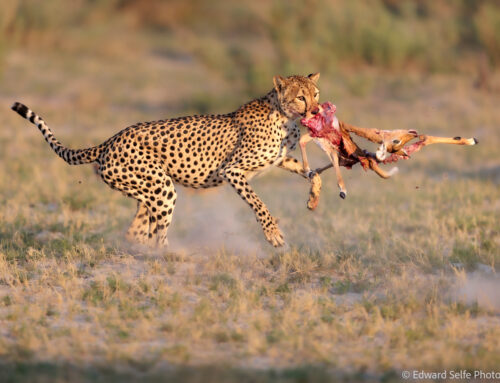It’s a huge honour to welcome back guests on repeat visits. It indicates that they enjoy the way that I run my safaris and, more importantly, that they have loved Zambia’s wildlife and wilderness. So when Don & Kathy and Kathy & Gordon arrived in Lusaka, it was for their 5th and 4th safaris with me respectively! This is not an accolade that I take lightly; there’s no resting on any laurels and it means that I have to work to deliver the best experience possible. These 4 guests had visited South Luangwa many times, and we had been to the Okavango Delta in 2022, but this time I added Lower Zambezi National Park with Classic Zambia to the tour. We had 3 nights at each of Chula Island and Kutali Camps, followed by 3 nights at Nsefu Camp and 5 at Lion Camp in South Luangwa.
As before, here follows a visual record of the tour, but you can also see daily updates from the safari on my Instagram highlights – follow the link here.
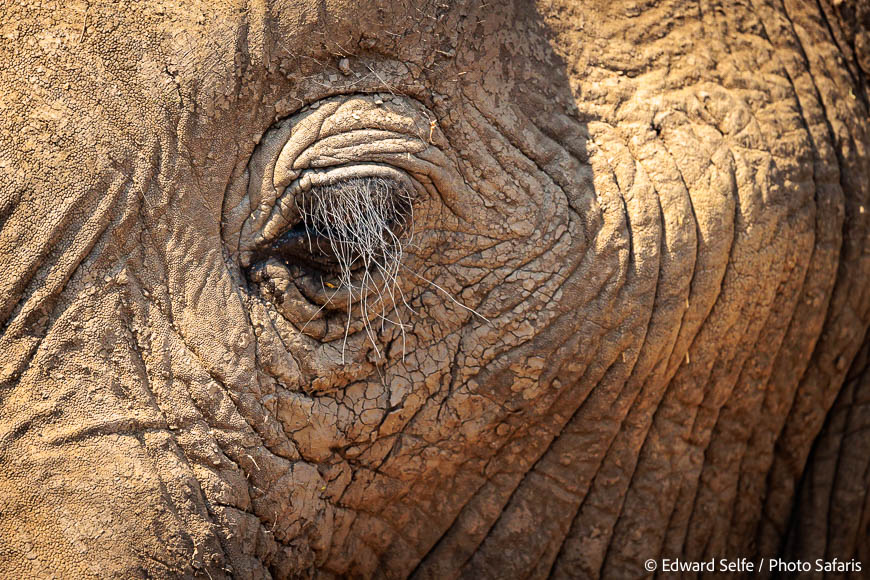
After landing at Jeki in the Lower Zambezi, the elephant sightings began immediately. Between the airstrip and camp, we enjoyed more than 50 elephants, including some that came so close….

..that we had our first lesson in close up portraits…..

….and textures.
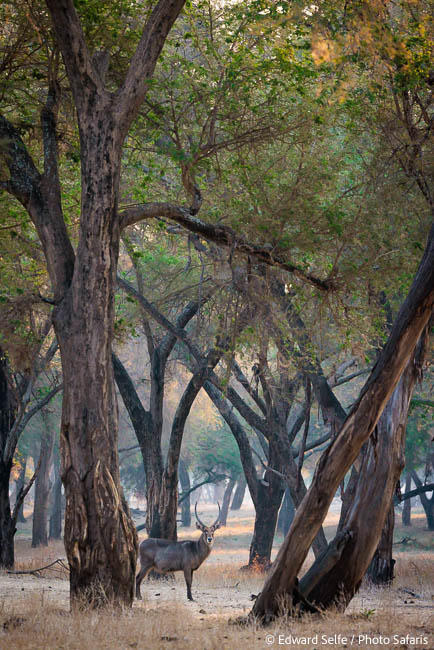
The more photography that I do, and the more photography that is done generally, the more people seek wildlife shots that also show the environment. I like to see how small I can make my subject in the frame while still making it immediately identifiable. Separation of the horns of this waterbuck from the trees behind is important, though the overall grey of the shot means that the subject is not as imposing as I would like.
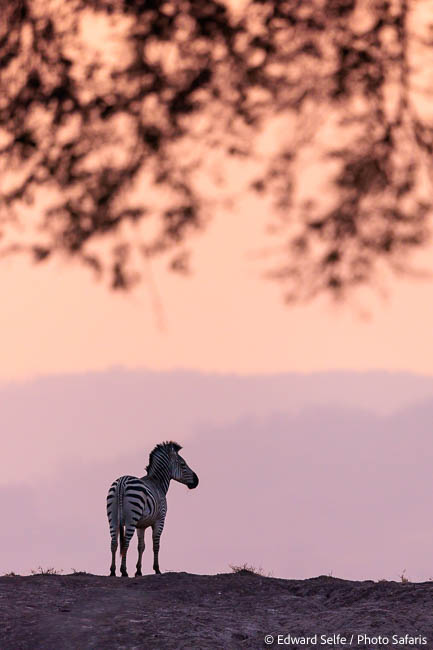
More effective is this zebra where the beautiful colours of the escarpment behind offer a sharp near-silhouette.

Shooting wider, and allowing some flare into the side of the lens gives a beautiful effect. Take care with the framing, allowing sensible end-points to the image on each side, and not cutting off the bases of any trees at the bottom.
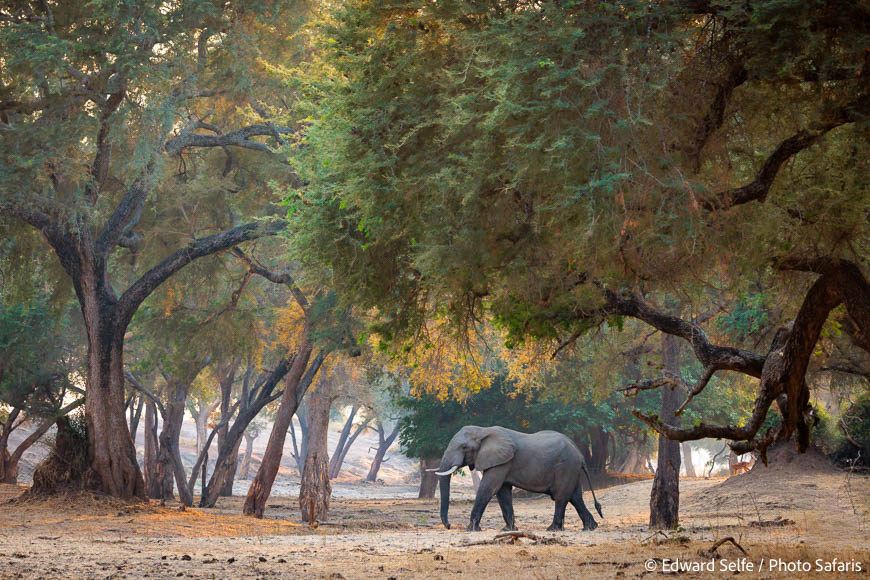
One of my favourite images from the Lower Zambezi. This particular morning was especially hazy, with almost no directional light piercing through to the Valley floor. It gave a very flat, low contrast scene which allowed all the colours and soft textures to shine through.
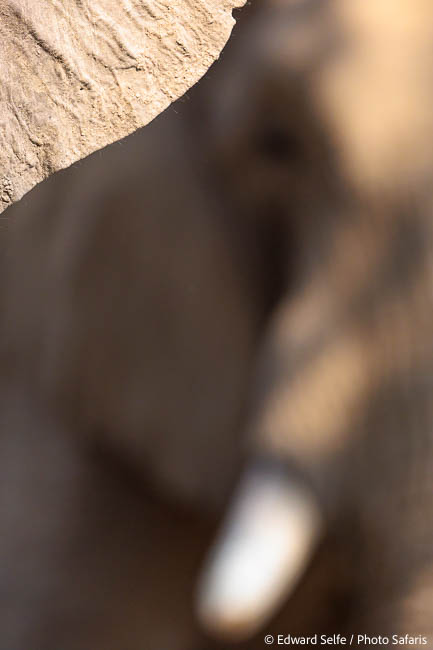
Playing with textures and depth of field….
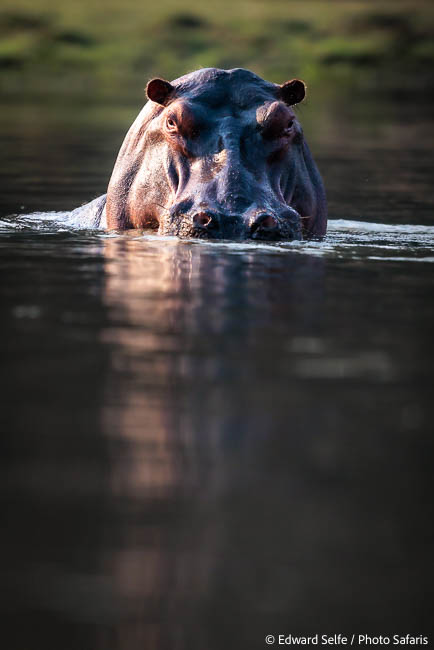
The Discovery Channel is a 30m wide, deep channel which leaves the Zambezi, flows round Chula Island, and then rejoins the river lower down. It is full of hippos, birds and is a constant water supply for the endless elephants that come and visit. We spent an amazing afternoon floating down the channel, shooting hippos….
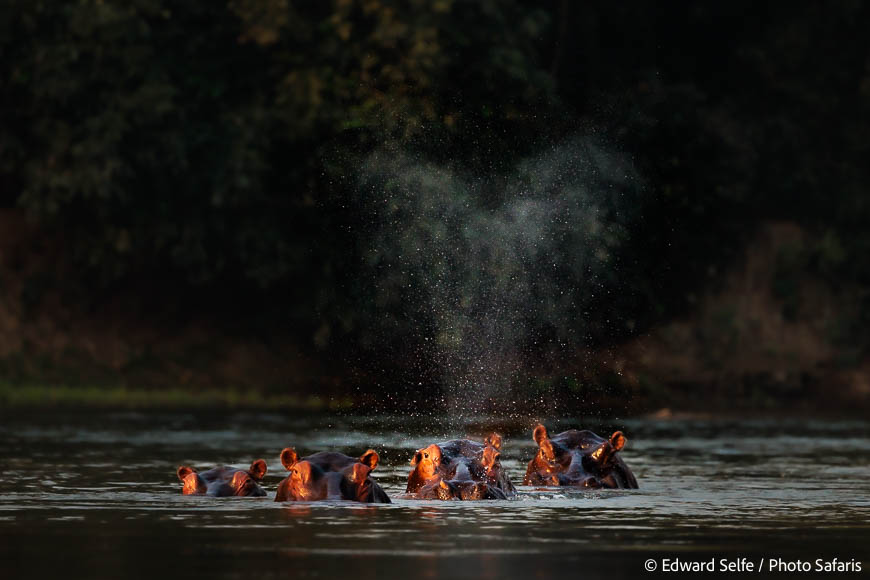
…on all sides. It’s a very immersive and exciting experience and highly recommended.

The elephants just kept on coming; one morning, after an initial search for predators that might still be moving around, we followed one large bull for several hours, waiting for him to move into the right position for photos…..
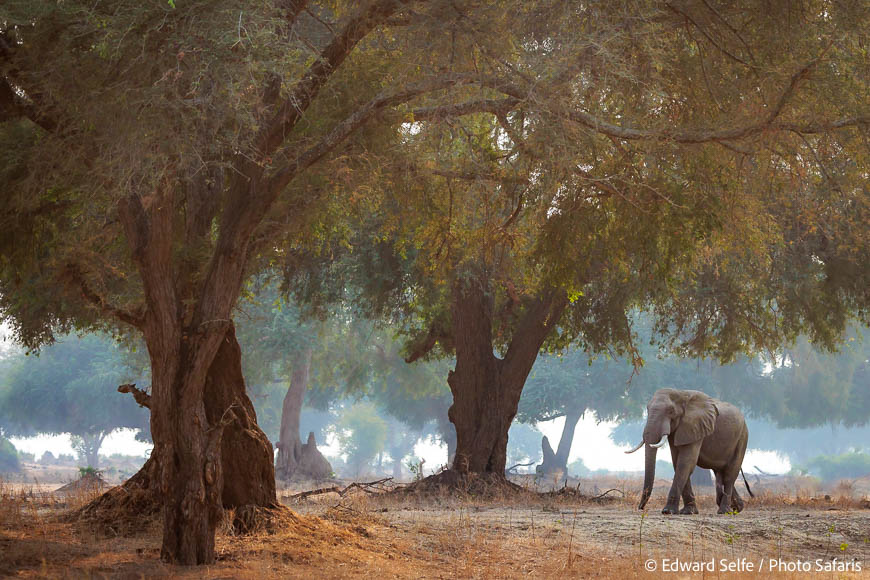
…in colour and monochrome….

…and to meet up with his friends. All these images were taken within a couple of hours, showing the range and variety of colours and scenes possible in the Lower Zambezi’s forests.
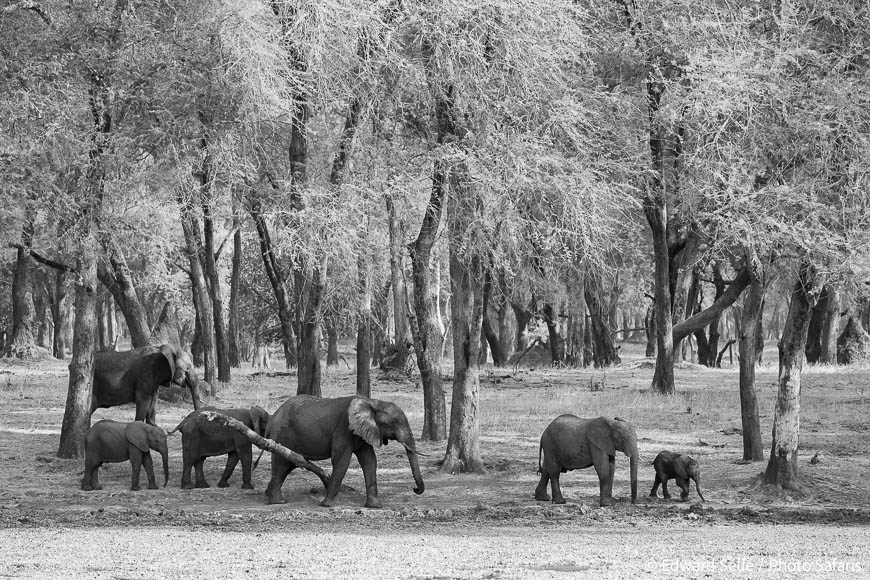
One afternoon, we went in search of the wild dogs which had been seen near Long Pool. On route, we spent 5 minutes at Long Pool itself where families of elephants were coming to bathe and drink. This family was very well lined up with the forest, creating a good composition with a flow from left to right.
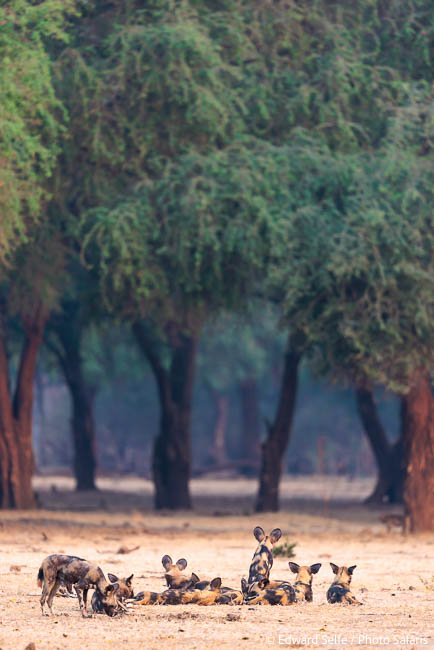
We spent the afternoon with the wild dogs. They were inactive to start with, but their location was wonderful, with a clear view of the forest behind. This pack has had a very interesting history and is undergoing dramatic change (I talk more about this in the Instagram stories)….
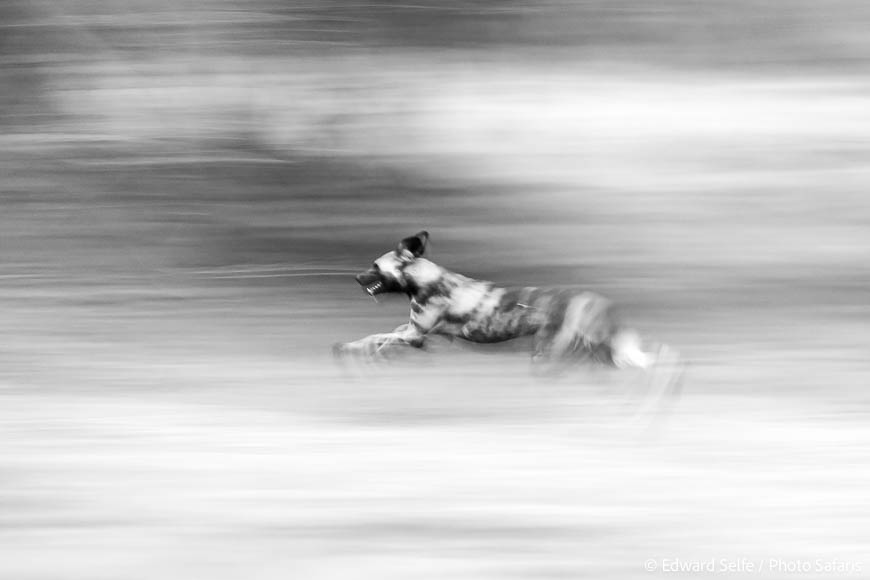
…and eventually they went hunting and gave us a very memorable afternoon. To see the best photos of this afternoon, have a look at Kathy Phipps and Gordon Fox’s report of the trip…watch out for the wild dogs and warthog image….

The next day we moved to Kutali Camp and had a very busy time on route, first finding the local lionesses with a waterbuck kill…

…and a young leopard known as Scar who was still moving around at 11:00am when we got close to Kutali Camp. We felt like we were in for a good time at Kutali!
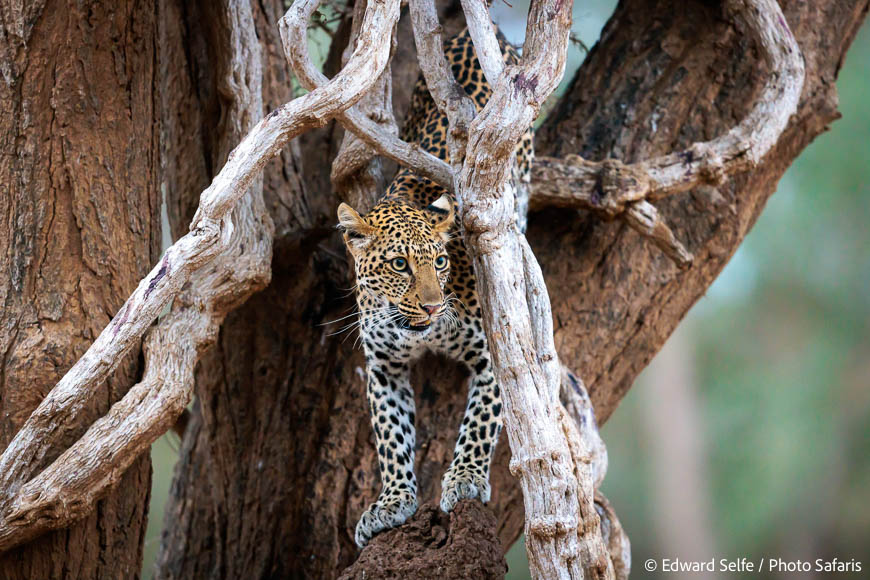
That same afternoon, we returned to spend some time with the young leopard known as Scar and found, instead, her sister high in a tree feeding on a bushbuck kill. We hadn’t known about the kill so we sat and waited. After a while, our guide Tyrone spotted Scar right at the top of the same tree resting in a ‘nest’ of capparis creeper…she was totally still and well camouflaged! Luckily, her sister descended before dark and we were able to get some lovely images of her in the creepers that surrounded the tree.
The following day ranks as one of my most extraordinary in 15 years in the bush. We left camp very early as normal; in amongst the large trees, we stopped to listen and photograph a Natal spurfowl. Moving on, almost immediately, we came face-to-face with a lioness who had been just behind the mound on which the spurfowl was sitting! We sat with her a few moments, but were then distracted by baboon and impala calls which led us to a female leopard and her daughter. As we arrived with them, their nervous stare caused us to turn our heads and see two big male lions emerging from the thickets on to the floodplain. At first they were just walking, but then they spotted a lone buffalo bull who was crossing the floodplain just a few hundred meters ahead…. They made a quick decision and went after him. The buffalo ran into the long grass, unknown to him, right where the lioness was resting up! The two males and the lioness brought the old buffalo down in a matter of moments….but all in the very tall grass so all we could see was the occasional lion tail whipping in the air. It was absolutely unbelievable to watch though, as I reflected on it, I found it quite haunting to think of the power and the confidence of those lions; they saw a target, decided they wanted it, and took it down. I watched the moment that they decided to move from walking to hunting; it was made in an instant.
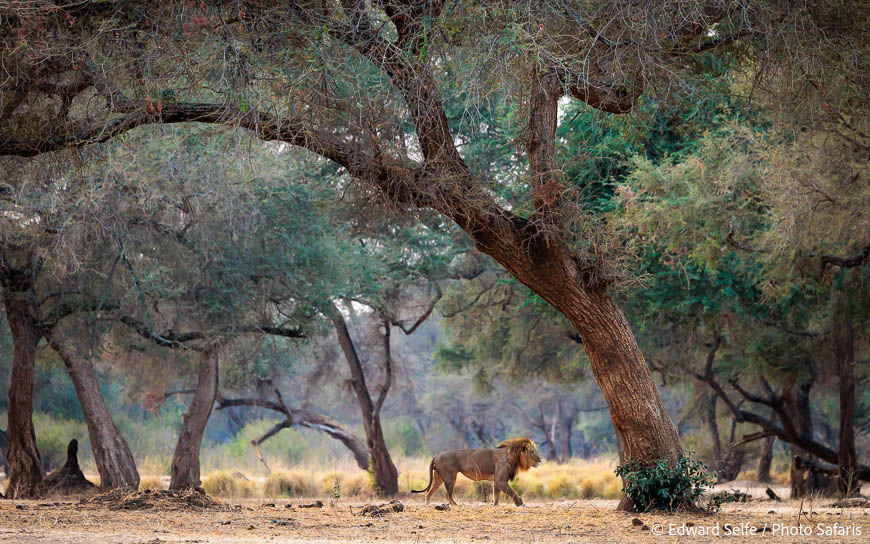
One of the two male lions strolling onto the floodplain the half-light of dawn. High ISO combined with the warm pink light of dawn creates this soft effect.

As we watched the action in the long grass – seeing snippets of the kill when the grass separated – I spotted something in the background of my binocular view. A leopard was strolling towards the scene, very much aware of the happenings and apparently interested to investigate more….. Lions and leopards are not the best of friends, and both are known to kill the others’ cubs as well as compete on carcasses. But of course, lions are by far the dominant, so it was odd to see this behaviour from the smaller cat. They was she was watching the scene made me believe that if the lions had moved off to get a drink, she might have snuck in to scavenge!

Eventually she climbed a tree overlooking the action where she spent the rest of the day…
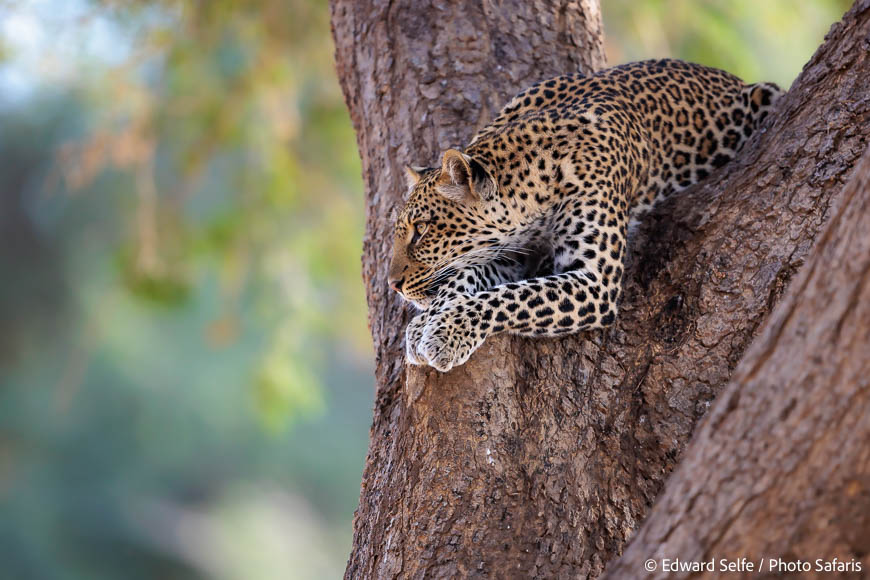
Her focus was locked on the lions, giving us plenty of opportunities to move around her and capture different angles.

In the late afternoon, she descended, silently, and wandered off…This had been a really remarkable event -have a look at the video below to show some of the action.
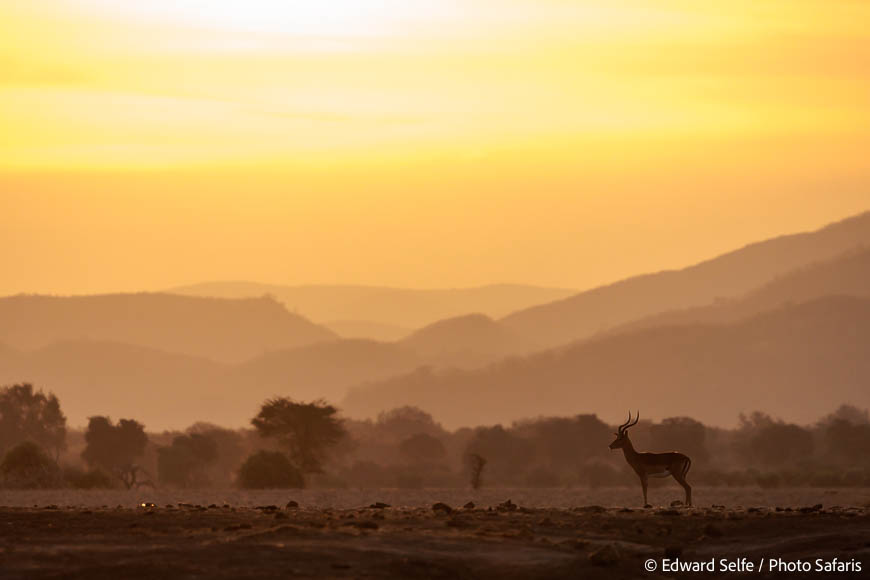
There was literally nothing that could top that….or was there? We decided to move to the top of the plains since there was an amazing sunset brewing and there are sometimes opportunities to shoot silhouettes against the sunset. Indeed, first impalas….
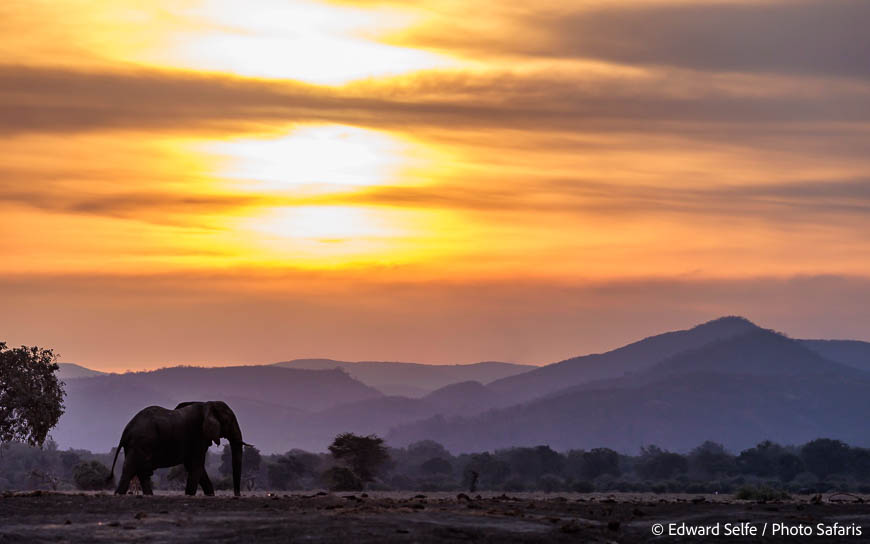
…then a single bull elephant….

…and then, in the distance, a herd of elephants emerged from the forest, moving at speed. We don’t know what had spooked them, but they came at just the right moment; as the sun reached its richest orange, they crossed the plain at the run, with the wind blowing the dust off their backs… This is a shot of the year!

Of course, Lower Zambezi had more in store for us; the very next morning, with crisp clear light usually reserved for the early part of the season, Lady emerged from the grass where she had been hunting birds, and lay on a fallen winterthorn tree. We came in from the backlit side and I explained that this view would show the leopard off beautifully because the halo of soft light was illuminating her outline. After we had shot our fill, we moved around to try the other side, but she descended and disappeared before we got there.

Later that morning, she jumped up out of the grass and explored a nearby termite mound, the starp light hitting her side on and bringing out all the textures.
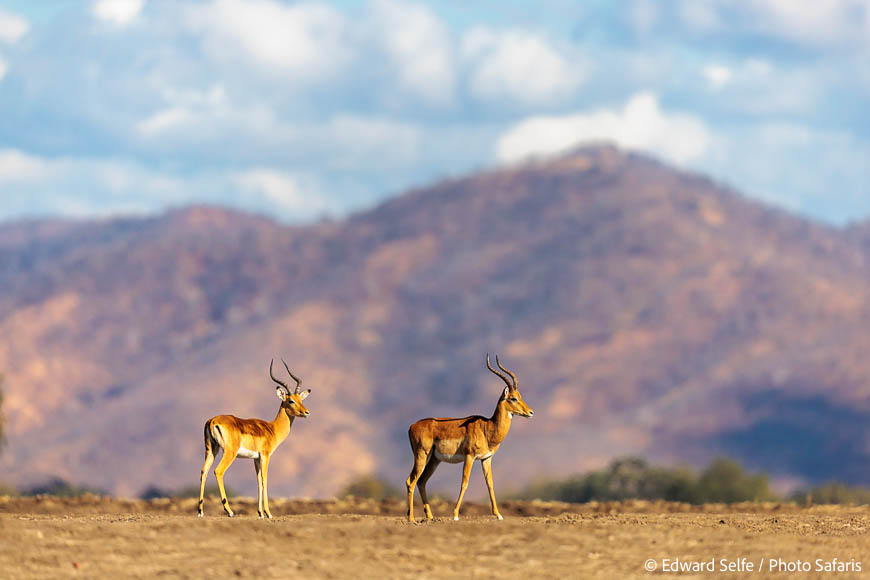
Making use of the clear, golden light, we worked on any subjects we could find, including impalas against the now purple escarpment wall.

Cloudy conditions later that day were better for dark buffalo in the forest, including a large herd that were good for a semi-high-key effect.

Boat safaris on the Zambezi are scenic, relaxing and a welcome break from the vehicle. Classic Zambia have a specialised boat with rotating seats that makes for great viewing. We went out searching for elephants and found a massive herd on one of the islands… They were feeding on reeds and allowed us to come very close.
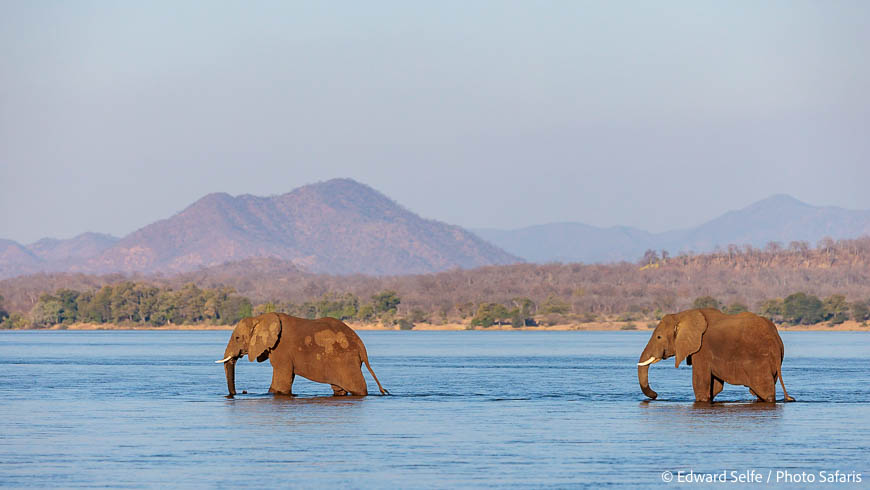
Elsewhere elephants were crossing the river in the shallows with a beautiful view behind them. Lower down the Zambezi River, it narrows and enters a steep-sided gorge, similar to the rocks shown in the background.
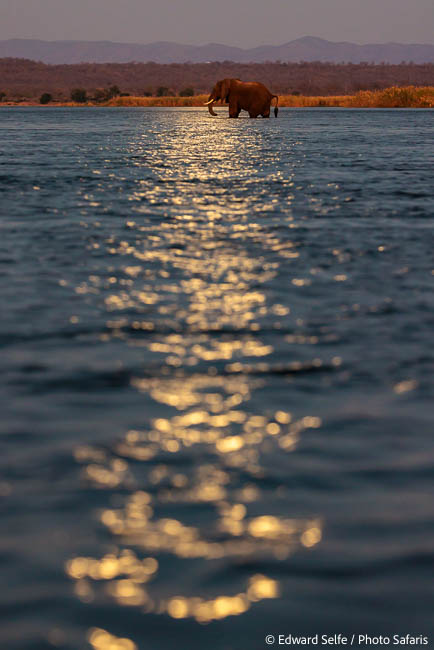
The moon was nearly full that evening, coming up just before sunset. We enjoyed a very unusual scene where the last glow of sunset was lighting the elephant from our side, and the moon rise was reflected in the water below him!
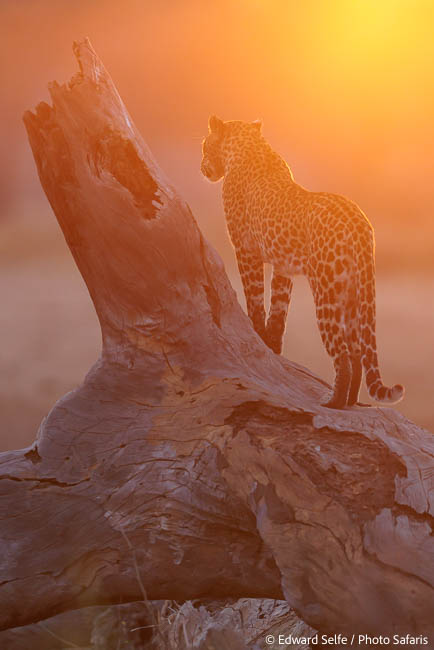
We had only a short morning before heading to the airstrip for the flight to South Luangwa, but we still had time to locate one of the young leopards of the area (who jumped obligingly onto a fallen tree as the sun rose over the horizon) and….
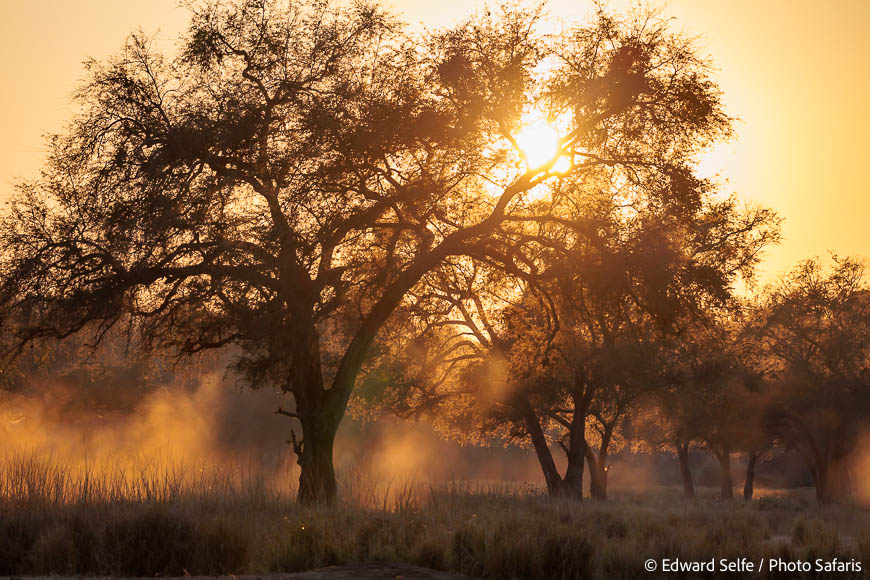
…and captured the scenery after a vehicle had crossed the floodplain and left a beautiful dust trail.
From there, it was on to South Luangwa, and I must admit I had some apprehensions… Lower Zambezi had been so good to us that I wondered whether it would match up. Despite loving all the destinations that I visit, I am particularly territorial about the South Luangwa as I have lived here so long and I want it to acquit itself well…even though I have no control over such things of course!
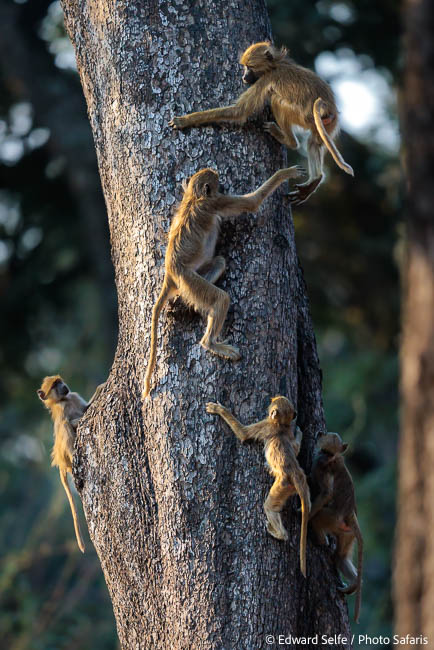
We had a steady start in the Luangwa, with baboons….

…..giraffes….
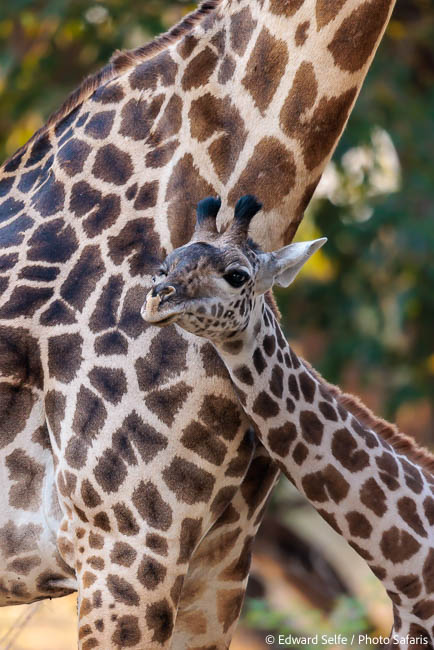
….some with youngsters….
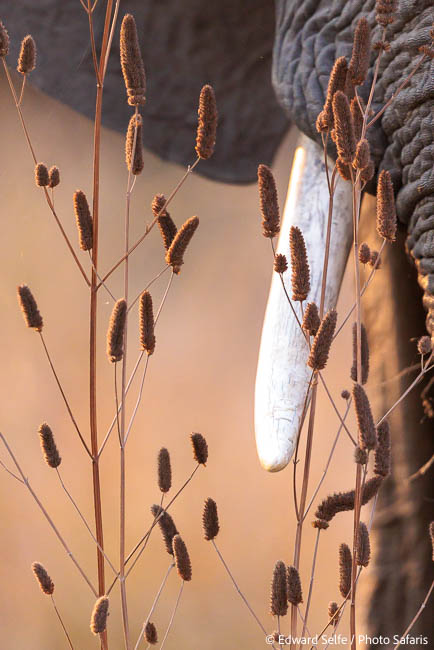
…and the chance to do something creative with the vegetation.
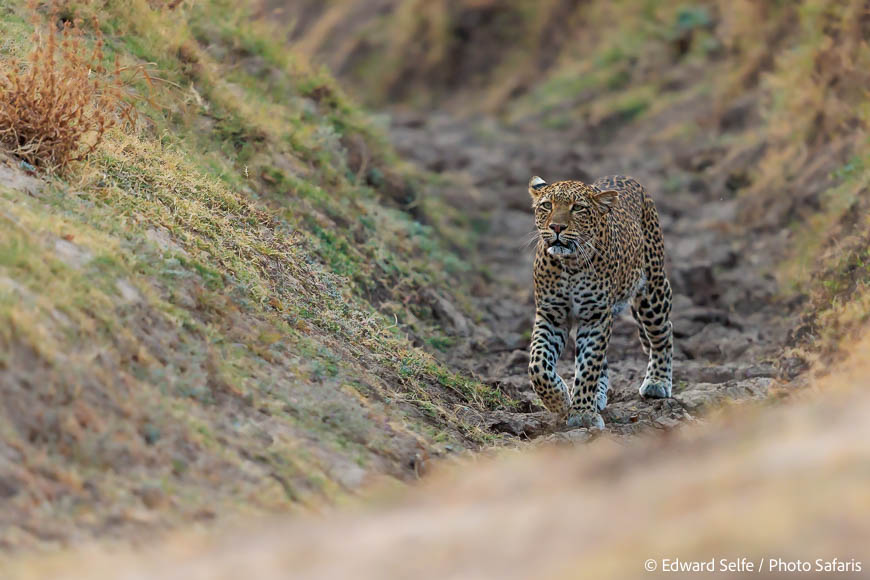
It wasn’t until day 2 that we tracked down Olimba, the well known leopard from Leopard Legacy in the gully at Chimbwi Lagoon. It was so good to see her after a long time. She’s looking older, and there’s a slight weariness in her movements, but she still has all the grace and beauty that has made her a star of South Luangwa.
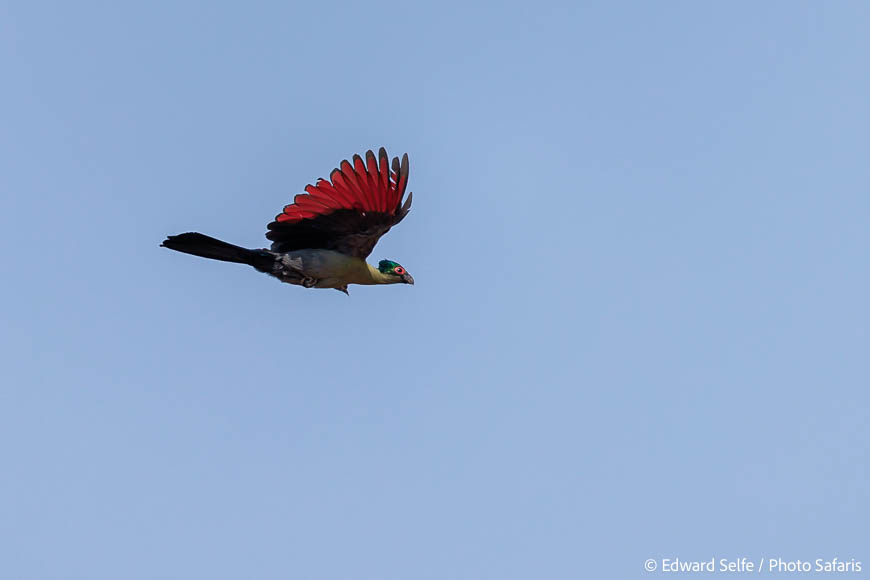
Leaving Nsefu the next day, I spotted a Purple-crested Turaco flew across the road. Knowing how hard these birds are to capture in flight, I took a chance and followed it. We got very lucky; it rose to the top of a tree, gave plenty of warning and then flew across a large opening and into the next tree. I was ready, as were several of my guests!
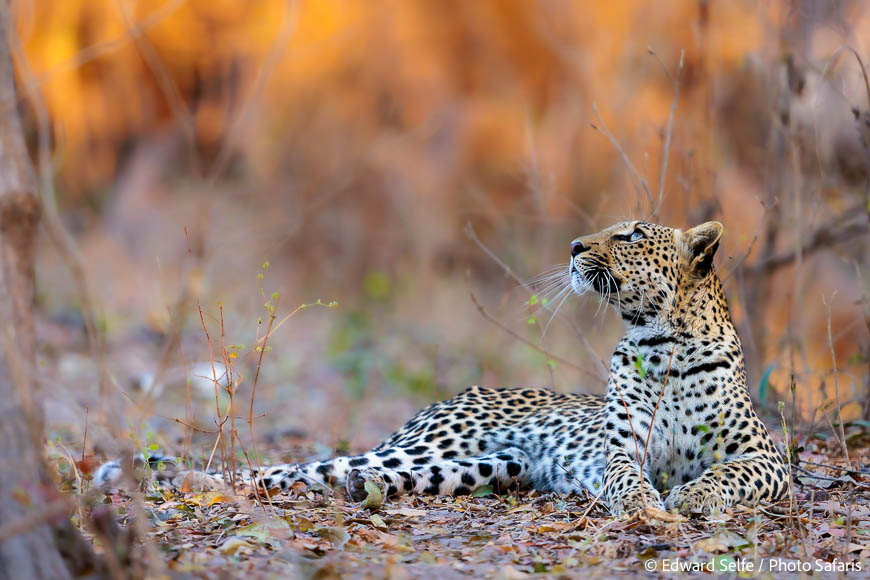
From Nsefu Camp, we crossed the river for our final camp, the magnificent Lion Camp. I always have an amazing time at this camp, with great roads, wonderful wildlife and spectacular scenery.

True to form, this following series of images was shot on our first evening in the camp…!
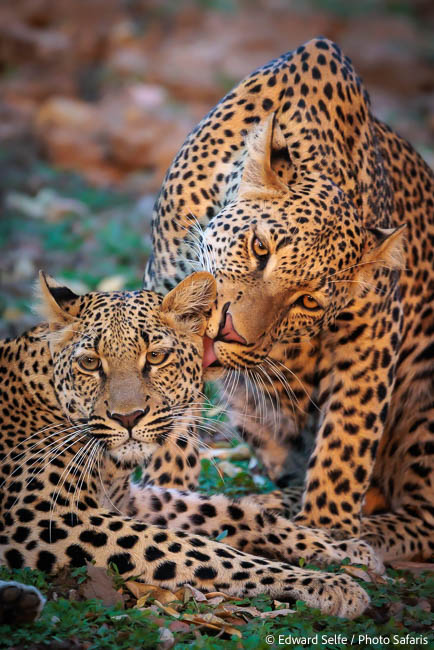
Chiphadzuwa’s two offspring are now approaching 2 years old and are increasingly independent. However, at this point, they were still seen together sometimes and we enjoyed one of those lucky afternoons. The baboons in the trees above kept things interesting, and the young female chased them several times (see the video below).
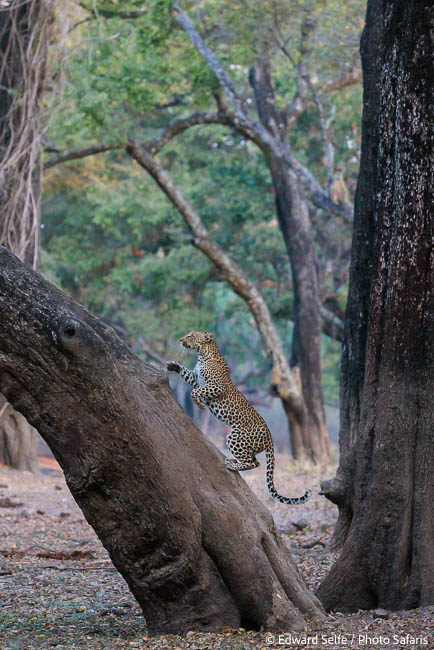
Extraordinary scenery to shoot leopards…so many chances to show the animal in its environment.
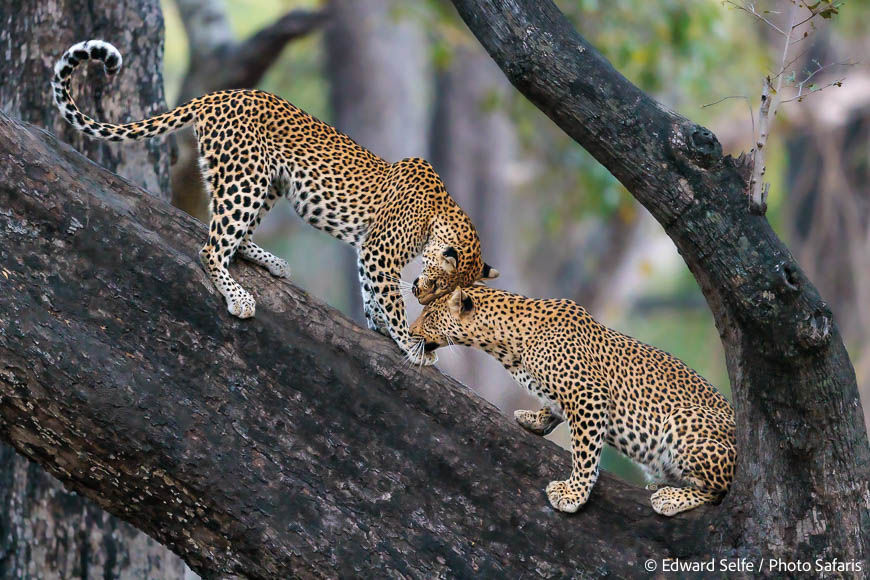
As a final gift to us, the two of them greeted on the branch ahead of us. Superb.
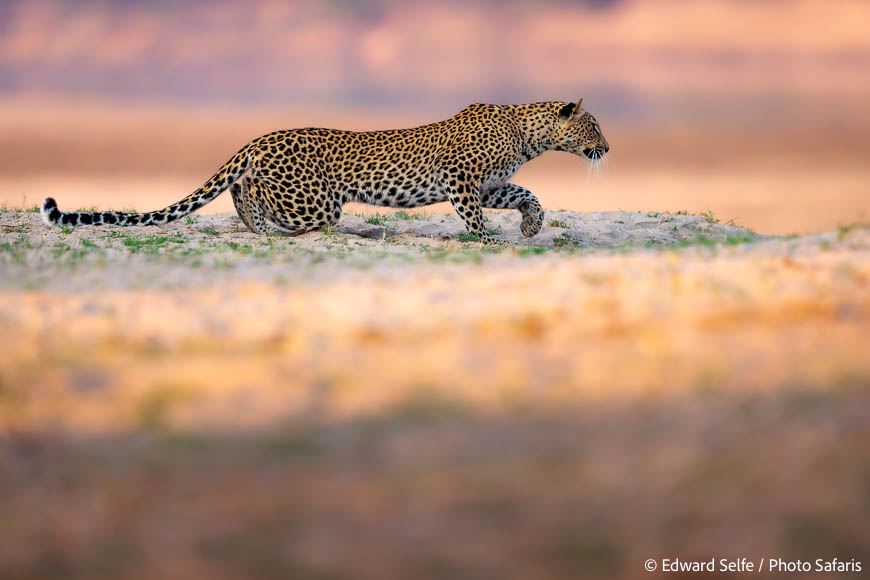
It wasn’t long before we caught up with the young leopards again, this time the female who was hunting along the banks of the Luangwa. Getting a low position in the vehicle allowed beautiful diffused background and foreground.
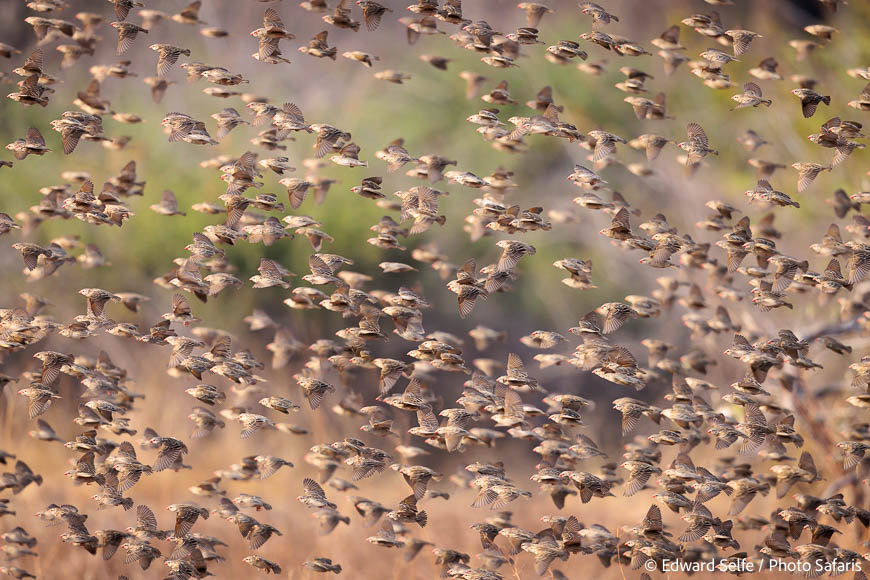
In between headline sightings, a photographic guide can find interesting and challenging photographic opportunities to keep everyone busy.
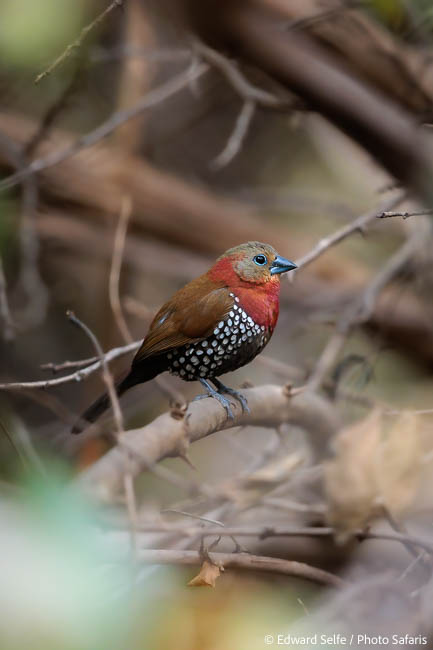
Back in camp, a female red-throated twinspot was calling while I prepared the vehicle. The male is more commonly seen so I am happy to add this to my portfolio.
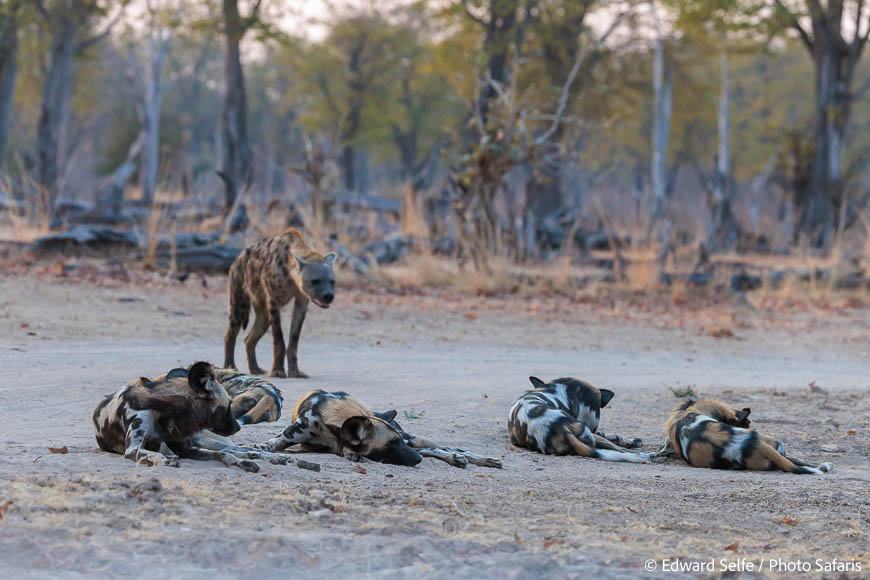
For the previous 2 days, we had been spending time with the wild dogs, but they had been sleeping until late in the day and hunting very early in the morning. While it was good to see them, there hadn’t been much action. Even so, we decided to sit with the pack that afternoon and see what happened. Interestingly they were tolerating the presence of a group of 3 spotted hyaenas who were sleeping in the same patch of shade, just a few meters from the dogs. However, when the time came for hunting, they were not keen to be followed and they harassed the scavenger badly before setting off…have a look at the video below!
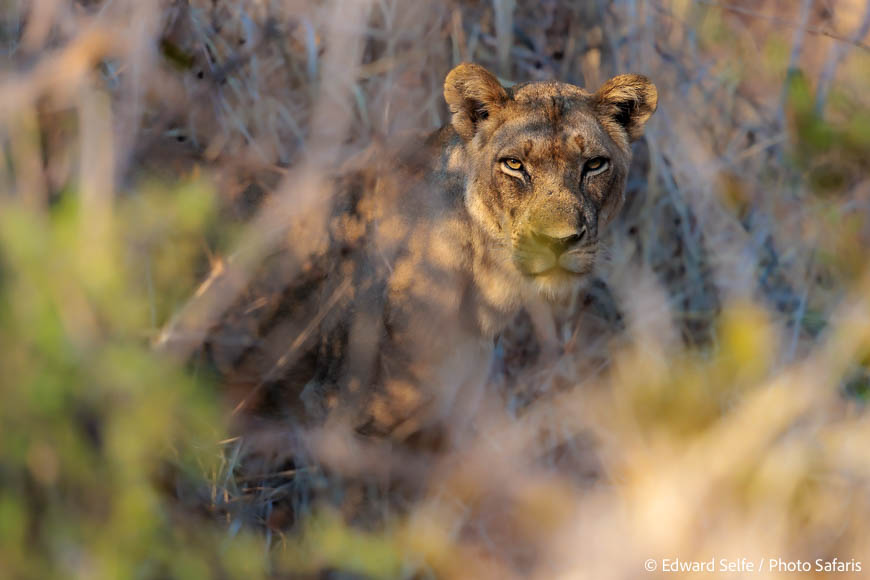
When I really wondered what else Lion Camp could give us, it gave us more! I decided to look for the youngsters of the Hollywood Pride which lives around Lion Camp. They have 5 cubs from this year and I started looking in their favourite places. As I approached one of them, a lioness lifted her head from the grass. Bingo! But it wasn’t one of the lionesses that I was expecting; Tipless and the collared female are the mothers with cubs and this was neither of them. Looking into the bottom of the thicket with my binoculars, I caught sight of the moment of a really tiny lion cub, perhaps 8 or 9 days old! This is by far the youngest cub I have ever seen and, even though it was an obstructed view, it made me us so happy to enjoy such a sighting.

Sightings came thick and fast in our last couple of days at Lion Camp. At this stage, when we have seen so much, we can start to take a chance on a sighting, gambling away the sure-shot for something riskier but much better.

And so it was with this young leopard. I saw her resting on the bank, in a nice spot, but nothing special. However, I knew that as the sun rose, she would want to head back to the treeline. I chose a spot, where a game trail came through the grass, with a low angle, and hoped that she would walk towards us. I didn’t even have to move the vehicle and she walked right down the lenses towards us. What a star and it was great to see a gamble pay off.

I enjoyed the patterns of the light on these Sausage tree leaves against the shaded background.
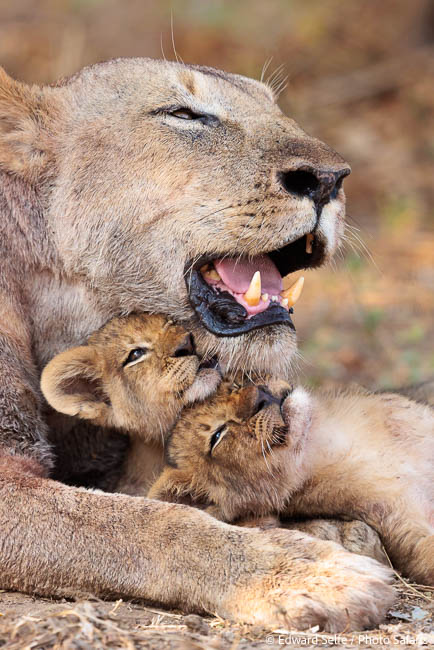
Almost our final sighting of the trip was the Hollywood pride who had killed a hippo and were feasting. The 5 cubs (the ones I had been looking for when we found the newborns) were there and they were playing with their mothers who were panting from the heat and from the effort of feeding on a tough hippo carcass!
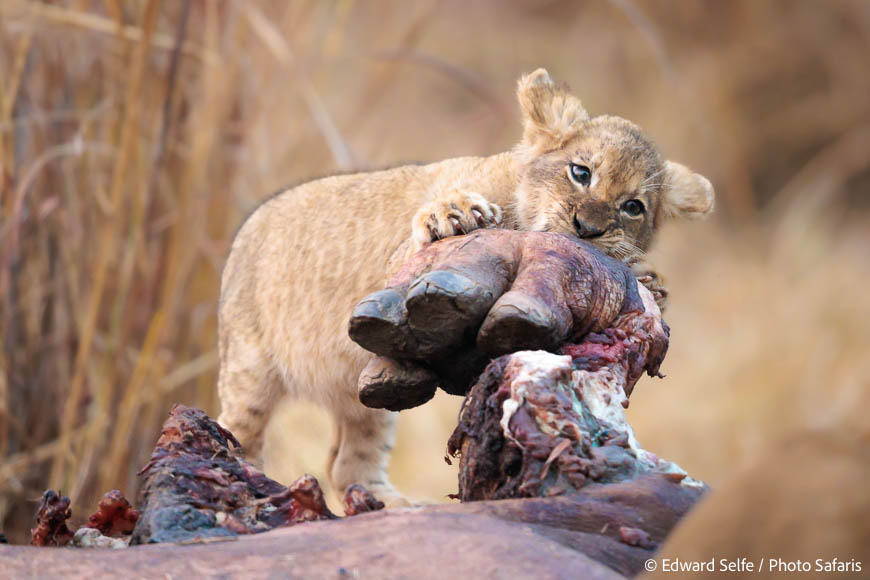
Two of the cubs are smaller than the other 3, and their tiny size is really demonstrated by the scale of the hippos’ legs alongside them!
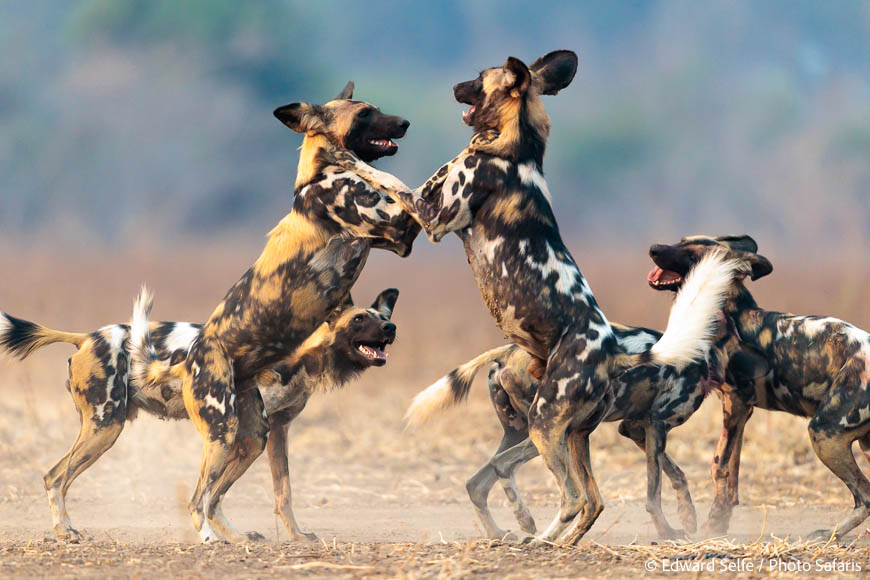
As we left camp on our final morning, we noticed a strange smell in the air. There was clearly a bushfire burning somewhere nearby as the air was filled with smoke. As the sun rose, we became aware of the scale of it – see the video below. But we were lucky to find the dogs one more time and enjoy their antics after a successful hunt, though the hyaenas had once again taken the bulk of the kill!
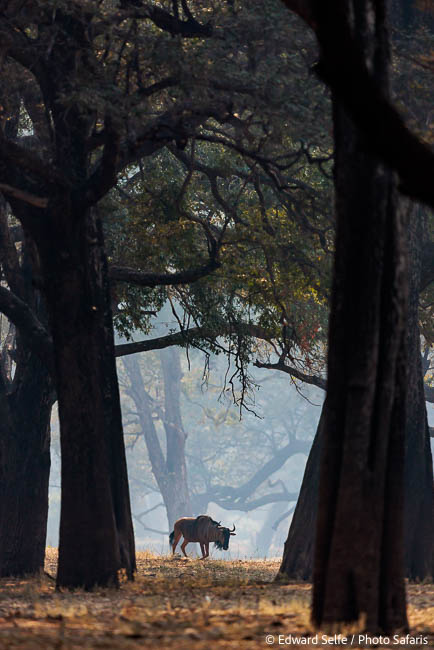
Taking the road through the ebony forest, we spotted a lone wildebeest heading to the water, and then it was time to finish the tour.
Thank you for reading to the end; I hope this no-frills report gives a real-life illustration of time on photo safari with me and perhaps encourages you to think about a visit to Zambia….or in the case of these guests, a revisit to Zambia. Thank you to Kathy, Gordon, Kathy and Don for travelling with me again and for all your energy, dedication and good spirits throughout the trip. It is really a pleasure to take you on tour and I am honoured that you continue to choose to travel with me on safari. Your repeat visits are a massive advertisement for Zambia and its wildlife and I look forward to welcoming you back in 2024 (Don & Kathy) and 2025 (Gordon & Kathy). Until next time, thank you for following.

